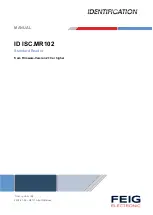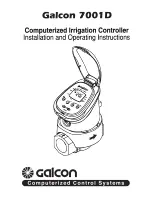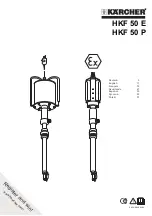
8
Nady Systems Inc.
FRONT PANEL CONTROLS & CONNECTIONS
1.
CHANNEL 1-4 XLR / ¼” INPUT -
The XLR mic inputs are an electronically balanced XLR type
designed to accept mic level signals from any balanced or unbalanced low impedance (Low Z)
microphone. The XLR jacks are configured for: Pin1 = ground, Pin2 = positive (+), Pin3 = negative
(-). The 1/4” mono line inputs are designed to accept unbalanced line level signals such as those
from keyboards, drum machines, or samplers.
2.
CHANNEL 5/6 STEREO 1/4” / RCA INPUTS -
The TS ¼” or stereo RCA line level inputs can
be used for connecting CD players, Tape Decks, and other audio equipment with line level
outputs.
3.
CHANNEL 7/8 STEREO 1/8” INPUT -
The stereo 1/8” line level input can be used for connect
ing CD players, Tape Decks,and other audio equipment with line level outputs.
4. REVERB CONTROL -
The REVERB CONTROL knobs can used to add an effect to the mic or
line input on any of the inputs 1-4. Adjust the REVERB MASTER knob and control the individual
channels REVERB CONTROL by using the knobs on channels 1-4.
5.
TREBLE CONTROL -
Turn to the right to boost high frequencies, adding crispness too percussion
from drum machines, cymbals and synths. Turn to the left to cut these frequencies, reducing sibi
lance or hiss. The control has a shelving response /-10dB of boost or cut at 10kHz.
6.
BASS CONTROL -
The bass control shelving response gives 10dB of boost or cut at 100Hz. Add
warmth to vocals or extra punch to guitars, drums and synths by turning to the right. Turn to the left
to reduce stage rumble, hum or to improve a mushy sound.
7.
CHANNEL FADER -
The channel faders determine the output signal level to the Master Mix bus.
It offers a smooth logarithmic taper, more often associated with much more expensive consoles,
for optimum control of the signal.
8.
MASTER FADER -
The master fader determines the output signal level of the Master Mix bus.
They offer a smooth logarithmic taper more often associated with much more expensive console
for optimum control of the signal.
9.
REVERB MASTER KNOB -
The REVERB master knob is used to adjust the amount of reverb
added to all channels.
10. MONITOR VOLUME KNOB -
The monitor volume knob controls the output level of the line and
stereo RCA record out. Note that the monitor out is intended to be used with powered speak-
ers or other devices that require no additional (wattage) power.
11. MONITOR OUT -
There are 2 ¼” TS / RCA connectors, as well as a 3.5mm jack for headphone
monitoring, that can be used to connect to powered speakers or any device not requiring
additional (wattage) power.
12. MEDIA PLAYER -
The PAS-300BT features a USB/SD/Bluetooth media player built-in. Simply
load a USB driver or SD card with desired MP3s, and push the MODE button until the USB or
SD media is selected. Next use the on-board playback controls for play, pause, rewind, fast
forward and play. When using BT, push the MODE button until the word Bluetooth appears. You
will hear a beep tone come from the speakers indicating itis in discovery mode. Next, pair with
your media player and use the Media Player volume knob to adjust the level
13. MEDIA PLAYER VOLUME KNOB -
Controls the Media Player volume.
14. SPEAKER OUT -
The PAS-300BT has two ¼” TS connectors, which are powered outputs used
to connect your left and right speakers. Use the included speaker cables to connect the
speakers.
CAUTION:
The total impediance load for each side of the amplifier must not be less
than 6 Ohms. Do not connect additional speakers to the PAS-300BT unless using monitor out
section (please read above for more details).
15. POWER / PEAK INDICATOR -
The POWER LED will illuminate Green when the main power switch
is turned on, and the red light will indicate the amplifier is near the clipping point. If the Peak
indicator is consistently light up, turn down the MASTER volume or the individual channel faders
until the indicator light does not flash consistently.
16. POWER SWITCH -
Use the power switch to turn the PAS-300BT on or off.
17. PHANTOM POWER -
Use the phantom power button to engage power on Ch.1-4 for devices
such as condenser microphones that may require an additional 48 volts of power for operation.
18. IEC INLET -
Connect the supplied heavy gauge 3-pin IEC power cable here.






























